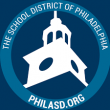
Samantha Sandhaus considered herself lucky Central High School didn’t have any of the physical issues she heard about at other Philadelphia schools, like buildings closed due to asbestos or lacking air conditioning.
But Central, according to the district, is not in ideal condition. The school, which moved to its current building in 1939, received a rating of 68 out of 100 for its facilities, putting it in a category of schools that require major repairs.
“I think it’s really evident in the city’s actions that they’re not prioritizing students and all of their learning spaces,” Sandhaus, 17, told Billy Penn and the Logan Center. “When you’re in an environment in which you don’t necessarily feel safe or healthy, it makes you feel neglected as a member of your community.”
Central’s story is not unique among Philly schools, whose infrastructure issues have been long documented. But the exact conditions of all the schools remain unclear as the district has yet to restart its facilities assessment paused late last year, leaving students, teachers and parents in schools that have incomplete or missing assessments in the dark about the state of the facilities.
Nearly 4 in 10 assessed schools showed “unsatisfactory” conditions, the worst of the district’s categories, per a Billy Penn/Logan Center analysis of district data published before the pause. Fewer than a third of assessed schools rated “fair” or higher.
Meanwhile, over a third of all schools in the district have yet to be assessed, including almost all of the charters. (Search for your school’s status/scores below.)
After kicking off the process in March 2022 under former Superintendent William Hite, who stepped down in August, the school district paused the assessments in November “to ensure cohesive alignment” between the facilities planning process and new Superintendent Tony Watlington’s strategic plan, which was approved in early June 2023.
The last full district-wide facilities assessment, completed by Parsons Environment and Infrastructure Group, was published in 2017.
Schools assessed last year were scored on several different criteria: “facilities conditions,” “educational suitability” (which measures how well they support instruction), and “utilization,” measuring how many students were enrolled relative to capacity. The district also published a weighted average of the facilities and educational suitability scores.
The assessment data is public, but users on the district’s website can only view ratings for one school at a time, making it difficult to compare scores across schools. Billy Penn accessed the complete dataset in a file accessible in the back end of the district website.
‘None of this is surprising’
Responding to questions at a recent rally aimed at generating state support for facilities, Superintendent Watlington said the district does intend to restart its assessment but did not provide a specific date, emphasizing the need to first “check in” with the public and be transparent about the process.
However, Watlington told Billy Penn he’s aware that the figures from 2017 are not “completely accurate anymore,” which has had an impact on the district’s ability to make repairs.
“We have [had] some damage, significantly, over any six year period, since that Parsons report was commissioned,” Watlington said. “We’ve had HVAC systems that have failed and had a host of plumbing and other issues.”
Maritza Guridy, whose children attend Mary McLeod Bethune School in Hunting Park, said she’s frustrated with the lack of communication from the district and doesn’t think many parents are aware of the facilities scores for their schools.
“If it’s not brought to light, that there’s an issue or needed repair, or a complete overhaul of the entire school, no one’s going to know it. And parents don’t know because they’re not in the school,” Guridy said. “The children know it.”
Bethune received a score of 70 (out of a possible 100) for its facilities and 69 for its educational suitability. Its HVAC controls were rated as “failing,” while several components of the roof were considered damaged.
According to the dataset, full or partial assessments were completed at 211 schools out of the 330 in the School District of Philadelphia, which includes both public and charter schools in the city. The vast majority of schools to receive assessments thus far in the latest round are public schools, while most charters have not yet been assessed.
Of the schools that received assessments, the average facilities score was 67, while the average educational suitability score was 64, both considered “poor.” Schools considered in “poor” or “unsatisfactory” conditions, according to their weighted average scores, comprised more than two-thirds of the assessed schools.
The schools with the worst weighted average scores included Bayard Taylor Annex in Hunting Park, with a score of 29; Isaac A. Sheppard in Fairhill, 35; and El Centro de Estudiantes in Brewerytown, 37. Most low-scoring schools are in older buildings, dating to the late 19th and early 20th centuries.
Fatim Byrd, a Spanish teacher at Mayfair Elementary-Middle School, said that even though the school has brand new wings, there are still a lot of physical issues, including broken thermostats.
Mayfair did not receive a recent assessment from the district.
“It’s crazy because that’s how working conditions are,” Byrd said. “They make a lot of people leave the district. I’ve seen some of my co-workers leave our school and district because they felt as though they could find better working conditions [elsewhere].”
Laurie Mazer, a mother to two children at Fanny Jackson Coppin Elementary-Middle School in Passyunk, said it would be much easier for the district to survey students, teachers and administrators in schools than to pay outside consultants to inspect them.
“The idea that any of this is surprising or new, it’s kind of a little shocking,” said Mazer, who is also a member of the Parents United for Public Education advocacy group. “That’s the kind of general theme with the school district, is like, they’ve been knowing. They’ve known. None of this is new. None of this is surprising.”
From Billy Penn






